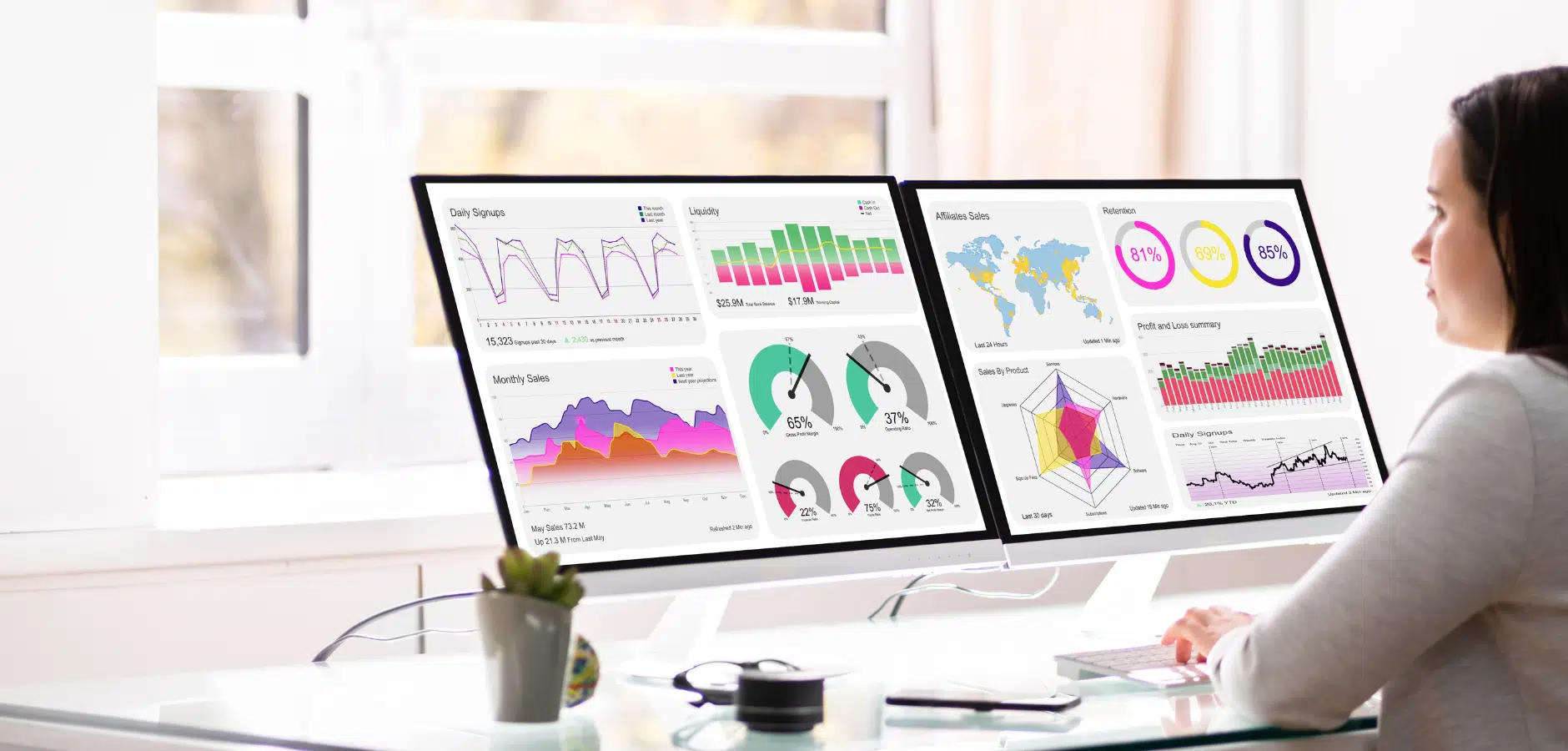Every marketer worth their salt dreams of launching that perfect campaign. You know, the one that delivers promotion-worthy results while turning heads with its creativity.
But let’s be real: bringing that vision to life isn’t exactly a walk in the park.
It involves wrangling the right data, decoding layers of analytics, and often, getting multiple departments to step out of silos to unite. (And we all know how tricky that can be.)
But here’s the good news: there’s a way to simplify this process. Let’s walk through a step-by-step strategy for crafting digital campaigns that harness the power of data without stifling creativity. By the end, you’ll be ready to turn your campaign dreams into reality.
Step 1. Develop collaborative relationships with data-focused teams
Many marketers lack access to the necessary data or resources to turn that information into actionable insights.
Break down marketing silos by fostering open communication between you and your data-driven internal teams. Depending on your company’s structure, these teams may include Data Science, Business Intelligence, Customer Success, Market Research, and more.
Working together creates opportunities to blend analytical thinking with creativity, ensuring your campaign strategy is data-informed and artistically rich.
Marketing leaders from Walmart and Helen of Troy divulge how they gain internal and external advocacy to achieve their goals at iPX 2024.
You can facilitate this collaborative culture by:
- Initiating cooperative brainstorming sessions
- Holding regular cross-departmental meetings
- Hosting workshops for learning about each respective discipline
These efforts promote feedback loops between teams and frequent experimentation, ensuring that each campaign iteration becomes more effective. It also allows you to easily tap into these teams’ vast resources and expertise, helping you achieve the best results for your campaigns.
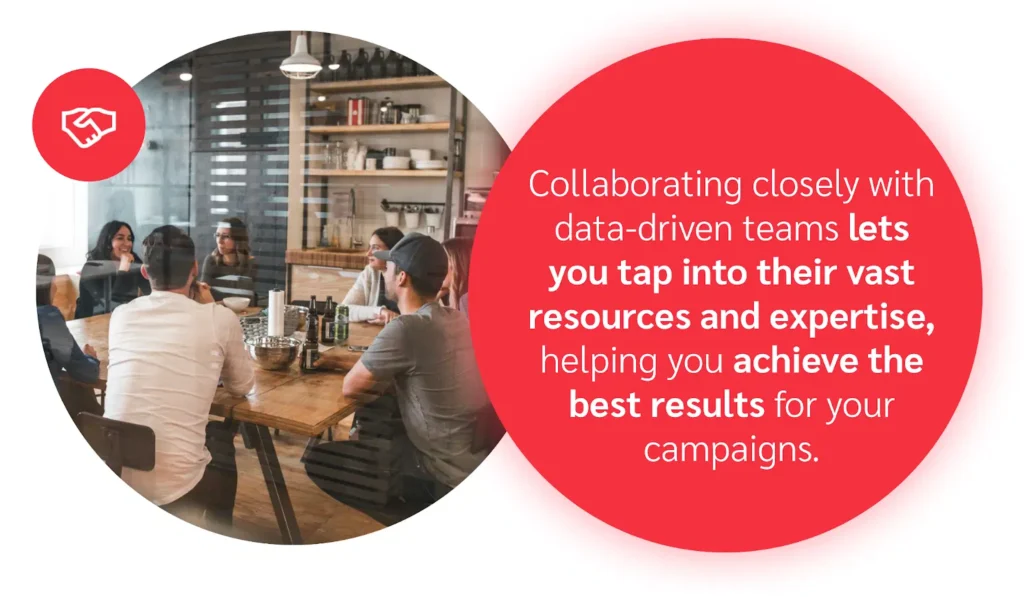
Step 2. Gather predictive analytics for better campaign planning
Now that you’ve formed partnerships with data-focused teams in your organization, it’s time to gather the data needed to shape your strategy.
Predictive analytics can help you forecast future trends and customer behaviors. Having this foresight will position your brand ahead of the competition—you just need to tap into the right resources.
Start with your existing customer database to gain insight into their purchasing patterns and customer lifecycle trends. You can use customer relationship management (CRM) systems to organize and analyze interactions and sales data. By turning historical data into actionable insights, you can forecast potential high-value customers and their future behaviors.
Then, dive into third-party tools—such as Google Analytics and social media analytics platforms—to provide comprehensive data tracking and reporting. These platforms can uncover trends and behaviors across digital channels.
You can also look at reputable internal and external market research reports to give your data further context and depth.
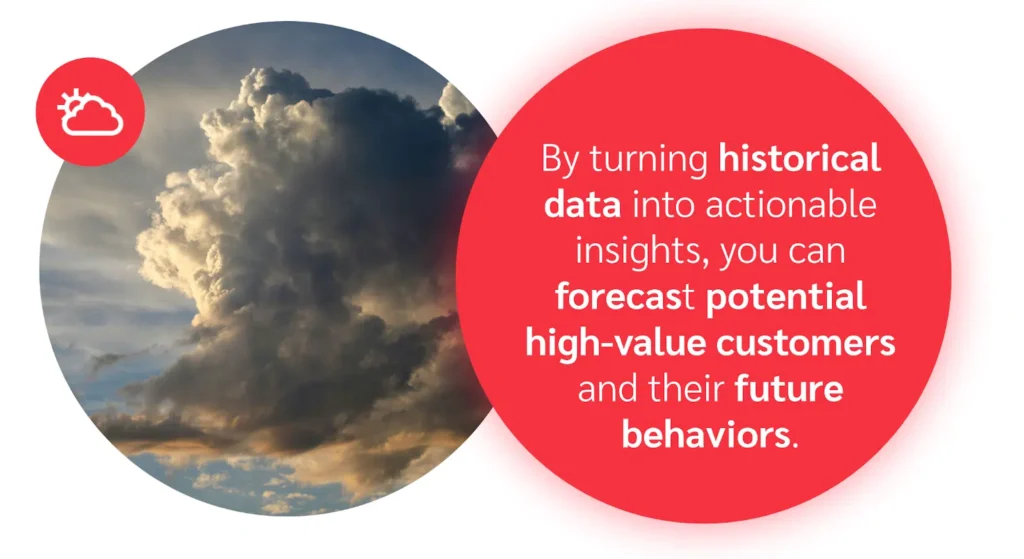
Step 3. Solidify a data-informed campaign strategy and message
Once you’ve gathered all the necessary data, synthesize this information into a proactive strategy.
Collaborate with data-focused teams or use AI tools to interpret large data sets that can direct your approach. There are many ways that various data points can inform campaign strategy and messaging.
Here’s a list of ideas to inspire you:
- Purchasing behavior to better understand high-value customer segments
- Demographic data to create personalized content for key audience segments
- Geographic data to inform location-specific campaigns and promotions
- Behavioral data to deliver timely messages during the purchase journey
- Psychographic insights to craft narratives that connect with customers’ lifestyles and values
- Past campaign data to determine the most effective channels
After gaining a clearer understanding of how your customer segments engage with your brand, document your strategy and cite the data that informed your decisions.
This approach helps you effectively target the right customers for your campaign and create alignment among all teams involved.
At iPX 2024, content creator Caitlyn Kumi explains how brands can use key data points—such as shares and comments—when evaluating which creators to use in influencer campaigns.
Step 4. Create a data-first campaign brief to guide creative
Now that you solidified your strategy and messaging, develop the creative approach for your campaign.
Luckily, data doesn’t have to stifle artistic vision—it can be a source of inspiration. Whether you work with an internal creative team or external agency to create campaign assets, the next step is to craft a thorough brief that integrates your data. You can also use this approach for any publishers or influencers you partner with.
Start by clarifying the strategic direction to make it actionable. Share specific objectives and the data that helped form them. This provides your creative team with a clear target to hit, simplifying the creative process and ensuring that the resulting ideas align with your business goals.
Suruchi Shukla shares how her team at Minted has begun using AI to create in-depth, personalized creator briefs for influencer campaigns at iPX 2024.
Your brief should include detailed customer personas that vividly illustrate the target audience. Creatives can then tailor copy and visuals to meet the audience’s needs and preferences.
Make sure the data you provide is easily digestible. Consider incorporating visual data representations for a quick, engaging way to communicate complex information. You can also review these insights during brainstorming sessions to facilitate open discussion and clarify questions.
Sharing relevant data in the campaign brief helps creative teams create innovative work that aligns with the campaign’s strategy, leading to greater impact and success.
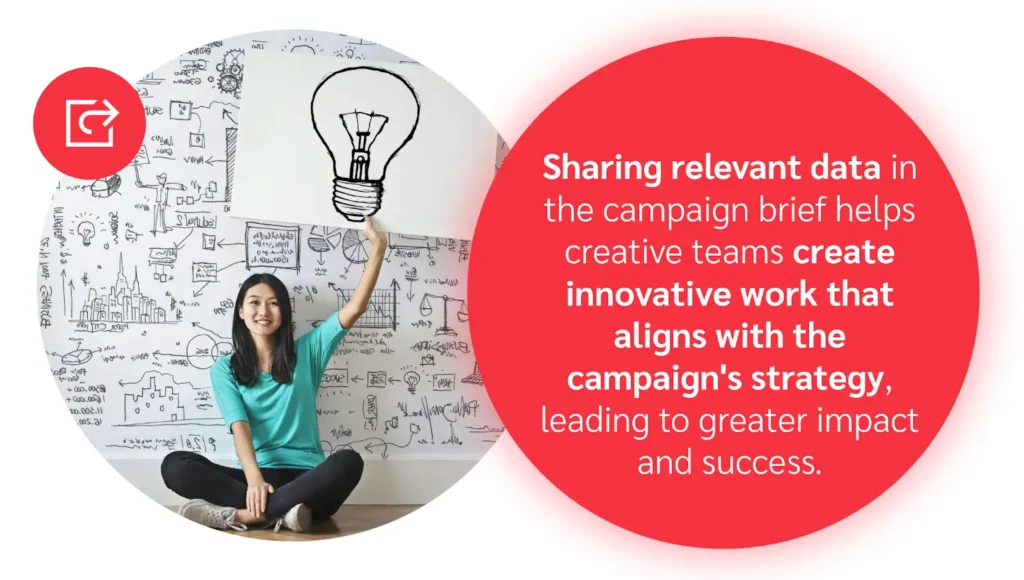
Step 5. Take a flexible approach with real-time campaign monitoring and A/B testing
Once you have all your creative assets, it’s time to kick off your campaign.
Though you’ve based your approach and creative on solid data, your work isn’t done. You should be prepared to pivot your campaign based on performance.
First, you need access to real-time data. Monitoring campaigns as they run helps you refine strategies on the fly by capitalizing on elements that resonate and adjusting elements that don’t. This flexibility enhances campaign performance and boosts engagement by delivering more relevant experiences.
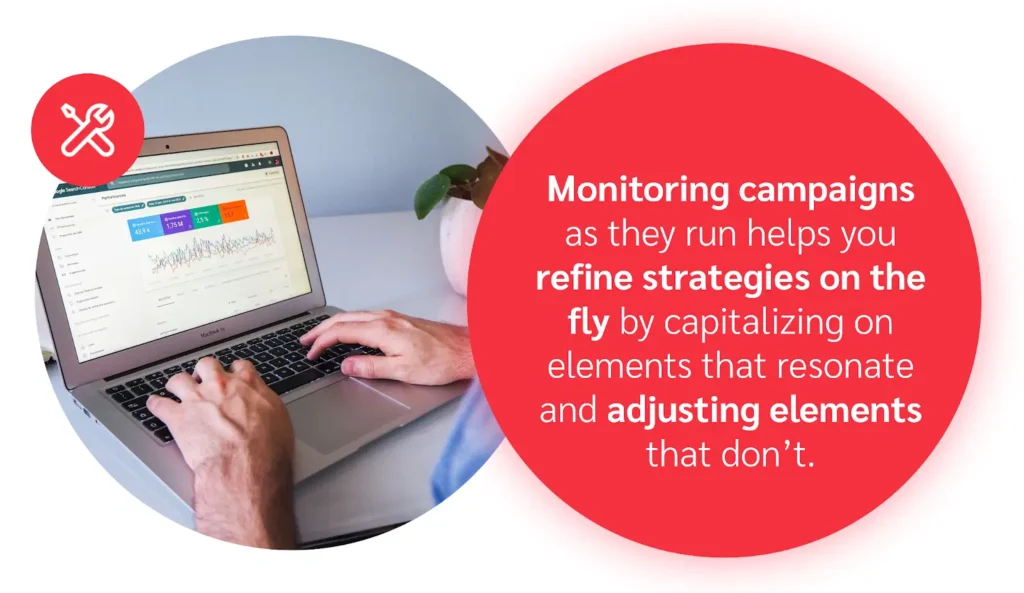
Tap into advanced analytics platforms to monitor key performance indicators (KPIs) and take a pulse on campaign health. Setting up customized dashboards with the help of the right team or using automation tools can further streamline the process.
Then, embrace A/B testing. Try different visuals, texts, and calls to action to identify what drives the best engagement while conveying your core message. Use these results to refine your campaign’s creative assets and achieve the best return on investment (ROI).
You can also save these data points to inform future strategies and creative decisions, promoting a culture of continuous improvement and innovation.
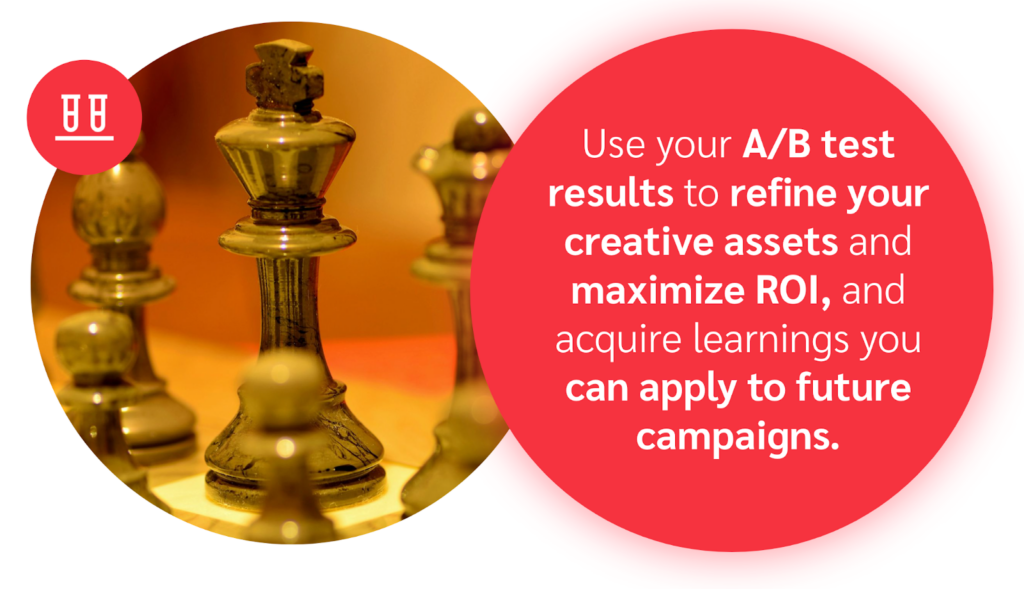
Step 6. Measure your campaign KPIs (and reevaluate them regularly)
Now that you wrapped up your campaign, gather your campaign data and assess how successful you were.
Most marketers evaluate performance by looking at specific KPIs. By tracking these metrics, you can easily demonstrate your achievements to stakeholders and identify improvement areas.
You must also ensure you’re using the best KPIs. Regularly reevaluating your KPIs allows you to adapt to changing market conditions and shifting consumer behaviors. Sometimes, what once was a relevant measure of success may no longer apply.
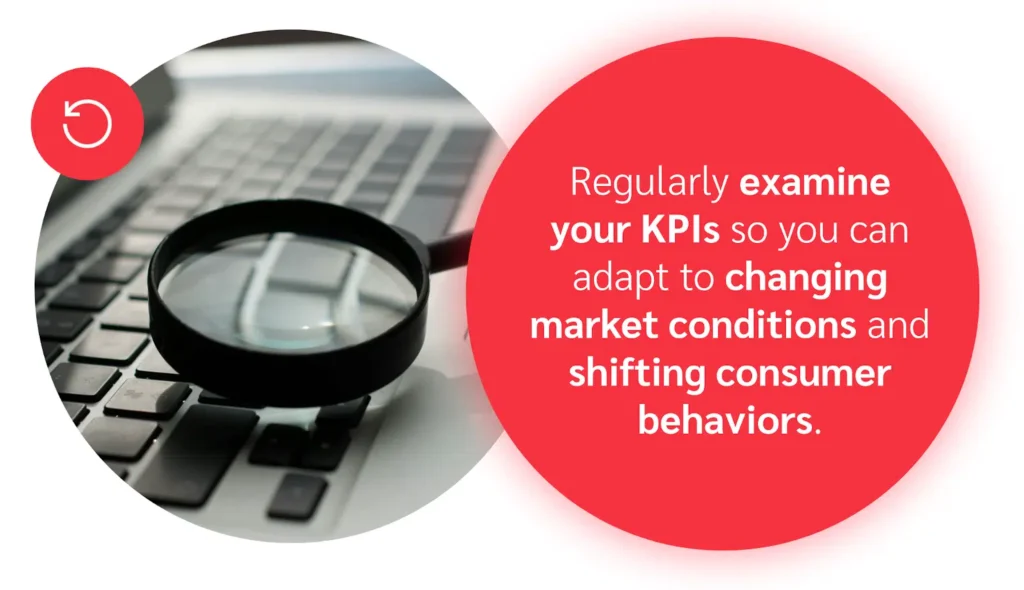
Periodically adjusting your KPIs helps you stay focused on the most impactful metrics and align your strategy with business priorities. This allows for better resource allocation and maximizes campaigns effectiveness.
KPIs also power the flywheel behind data-driven marketing initiatives. When you make decisions using data and continuously improve, your campaigns produce better results. It also cultivates a greater culture of learning and innovation within the marketing team.
At iPX 2024, marketing leaders talk about why defining key success metrics makes it so everyone involved understands what makes a campaign successful.
Step 7. Share your results and key takeaways for future initiatives
Sharing campaign results can boost the success of future initiatives.
By sharing what worked and what didn’t with stakeholders, you can bolster everyone’s collective knowledge and improve. What you learn from one campaign can guide your approach for the next, making each effort more impactful.
Try these methods to communicate your key learnings:
- Share a detailed report that highlights key metrics, successes, challenges, and actionable insights
- Organize inter- and cross-departmental meetings to discuss results and brainstorm opportunities for improvement
- Set up collaborative tools, such as dashboards or shared platforms, to simplify the sharing process
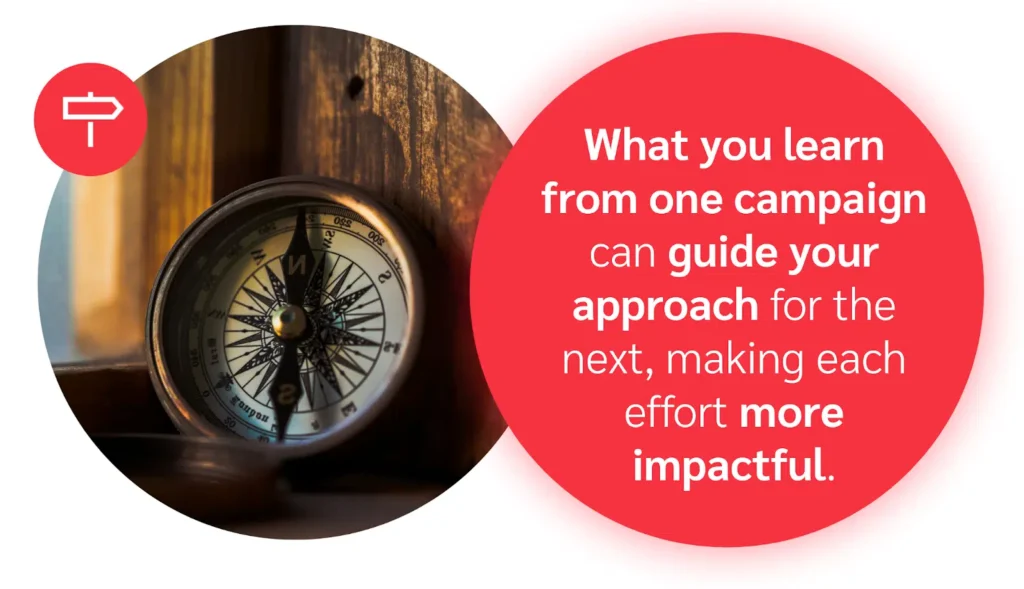
Everyone can see how their contributions affect performance when they have access to campaign insights. This understanding creates a shared purpose and motivates teams to align with the company’s goals.
Ultimately, making data-driven decisions when setting up your campaigns isn’t enough. You need to have a collaborative and transparent marketing approach. This culture drives sustained growth and gives you a competitive edge.
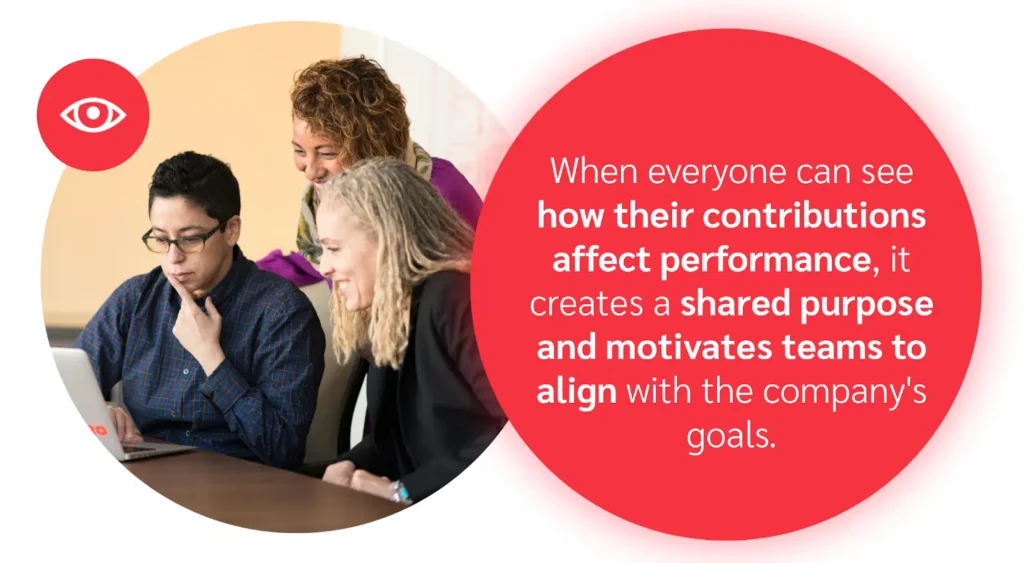
Blend data-driven insights with creativity
Data empowers you to create successful campaigns through better targeting, higher conversion rates, and increased customer satisfaction. By adopting these data-driven strategies, your marketing efforts can become more precise and provide better ROI.
Integrating these practices ensures your campaigns stay innovative and creatively appealing, giving you the best of both worlds for top-notch marketing performance.
Explore how you can elevate your marketing to new heights:
